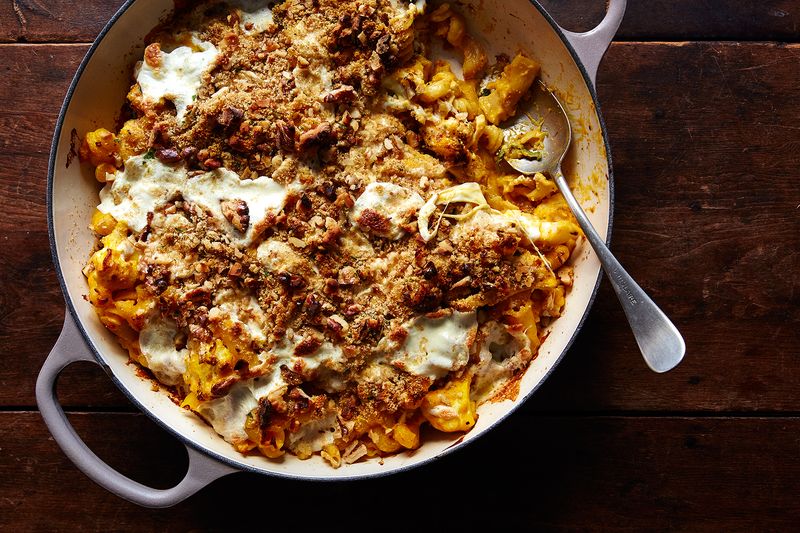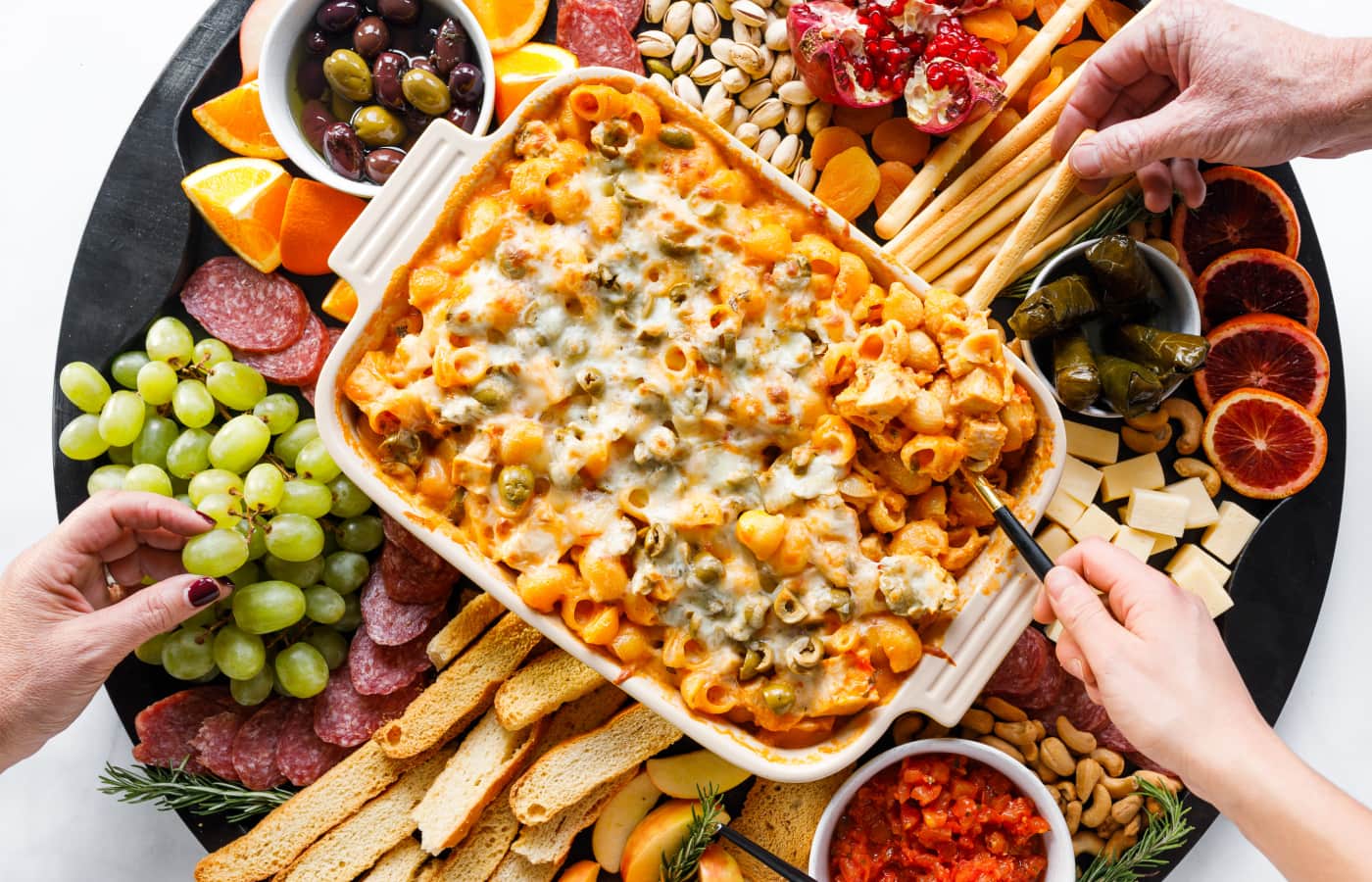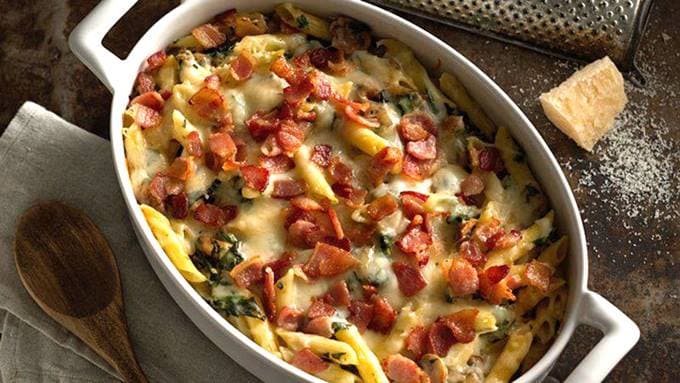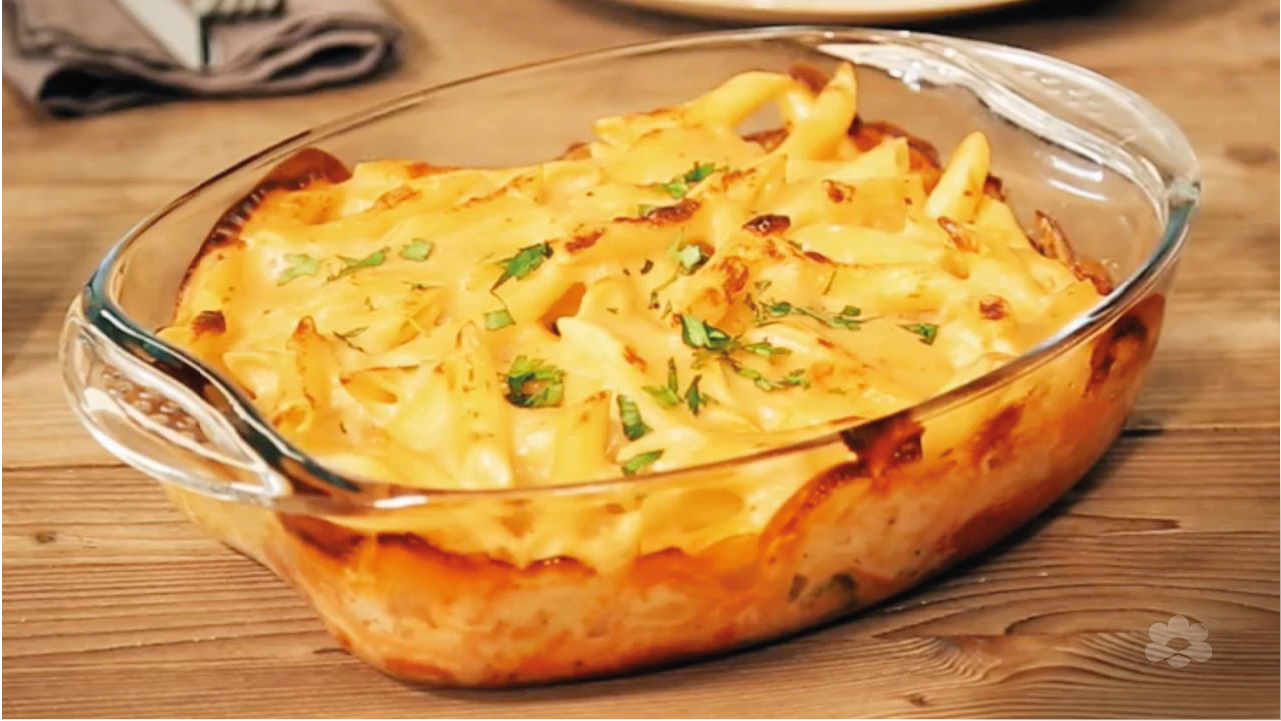Indulge in the ultimate comfort food: a bubbling, golden baked pasta dish enveloped in a velvety, rich cheese sauce. Imagine tender pasta coils swimming in a creamy béchamel laced with sharp cheddar, nutty Gruyere, and tangy Parmesan, topped with a crispy breadcrumb crust that shatters under your fork. This isn’t just dinner—it’s a hug from the oven, evoking family gatherings, potlucks, and those chilly nights when only carbs and cheese will do. Whether you’re channeling classic macaroni and cheese or experimenting with ziti and four-cheese blends, mastering this dish at home is simpler than you think.
we’ll uncover the timeless history of baked pasta with cheese sauce, the culinary science that ensures silkiness, key ingredients and techniques, a foolproof recipe drawn from award-winning sources, baking methods, cheese selection secrets, creative variations, and nutritional breakdowns. Tailored for your website, we’ve incorporated SEO-optimized headings, internal links to complementary content (like our pasta boiling guide), and external references to experts such as RecipeTin Eats. Plus, image suggestions to boost engagement and dwell time. Let’s dive into cheesy bliss!

The Timeless History of Baked Pasta with Cheese Sauce
Baked pasta dishes smothered in cheese sauce trace their roots to medieval Europe, where pasta met dairy in humble casseroles. The earliest known recipe appears in the 13th-century Italian cookbook Liber de Coquina, describing a simple baked macaroni layered with cheese—likely a precursor to modern mac and cheese. By the 14th century, English cookbooks featured similar “loosens” (pasta sheets) baked with cheese and cream, evolving into the creamy gratins we adore today.
The dish crossed the Atlantic in the 18th century, thanks to Thomas Jefferson. Enslaved chef James Hemmings, trained in French cuisine during Jefferson’s time in Paris, introduced macaroni and cheese to Monticello in 1789. Jefferson’s 1802 recipe—pasta boiled, layered with cream and cheese, then baked—helped popularize it among American elites. By the 19th century, it democratized: Kraft’s boxed version in 1937 made it a Depression-era staple, selling 50 million boxes in its first year. Post-WWII, soul food traditions in the American South elevated it with custard-like eggs and multiple cheeses, turning it into a holiday must-have.
From French béchamel influences to Italian baked ziti, this dish embodies fusion comfort. For your site, link internally to evolution of comfort foods. Externally, explore Wikipedia’s Macaroni and Cheese page for global timelines.
This heritage reminds us: Baked pasta with cheese sauce isn’t trendy—it’s timeless.
The Science Behind a Rich, Silky Cheese Sauce: 7 Key Principles
A flawless cheese sauce is alchemy: butter, flour, milk, and cheese transforming into unctuous gold. At its core is the roux—a cooked paste of equal parts fat and flour that thickens without lumps—followed by béchamel (roux + milk), then Moray (béchamel + cheese). Here’s the science in seven essential tips for perfection:
- Roux Magic: Cooking butter and flour at low heat gelatinizes starch granules, preventing a raw flour taste. A white roux (2-3 minutes) keeps béchamel pale and mild.
- Temperature Control: Gradually whisk cold milk into hot roux to avoid clumps—proteins in milk denature evenly, creating a smooth emulsion.
- Starch Emulsification: Flour’s amylose binds fat and water, stabilizing the sauce. Overcooking breaks this, leading to separation.
- Cheese Integration: Add shredded cheese off-heat; its proteins melt without curdling. Sodium citrate (from processed cheese) enhances this for ultra-smoothness.
- Acid Balance: A pinch of mustard or nutmeg cuts richness, enhancing umami via flavor perception science.
- Infusion for Depth: Simmer milk with onion or bay leaves to infuse aromatics, releasing volatile compounds for layered taste.
- Rest and Reheat: Letting sauce sit allows flavors to meld; gentle reheating preserves emulsion.
These principles ensure your sauce clings to pasta without greasiness. Internal link: Sauce science basics. External: MasterClass on Roux and Béchamel.
Selecting the Best Pasta and Cheeses for Your Bake
Pasta choice matters: Elbow macaroni holds sauce in its curves, while rigatoni or ziti traps cheese in tubes for even distribution. opt for short shapes; al dente cooking (boil 1-2 minutes less than package) prevents mushiness in the bake.
Cheeses define richness: Blend mild cheddar for creaminess, sharp for bite, Gruyere for nuttiness, and Parmesan for umami. Freshly grated melts better than pre-shredded (starch coating blocks fusion). Aim for 4-5 varieties for complexity. Internal link: Cheese selection guide.

Essential Ingredients for a Luxurious Cheese Sauce and Bake
Build your sauce with: 4 tbsp. unsalted butter, 1/4 cup flour (for roux), 3 cups whole milk (or half-and-half for extra cream), and 3-4 cups shredded cheese mix. Flavor with 1 tsp mustard powder, 1/4 tsp nutmeg, salt, and pepper. For the bake: 1 lb. pasta, 1 egg (for custard binding in Southern styles), breadcrumbs for topping.
Pro tip: Infuse milk with garlic or herbs for depth. Internal link: Pantry staples for pasta nights.
Step-by-Step Recipe: The Ultimate Four-Cheese Baked Pasta
Inspired by Recipe Tin Eats’ creamy bake and Mom On Timeout’s crunchy top, this serves 8. Prep: 20 min | Cook: 30 min | Bake: 25 min | Total: 1 hr. 15 min.
Ingredients
Cheese Sauce:
- 4 tbsp. unsalted butter
- 1/4 cup all-purpose flour
- 3 cups whole milk, warmed
- 2 cups shredded sharp cheddar
- 1 cup shredded Gruyere
- 1/2 cup grated Parmesan
- 1/2 cup shredded mozzarella
- 1 tsp Dijon mustard
- 1/4 tsp ground nutmeg
- Salt and white pepper to taste
Pasta Bake:
- 1 lb. elbow macaroni or cavatappi
- 1 large egg, beaten
- 1 cup Panko breadcrumbs
- 2 tbsp. melted butter (for topping)
- Optional: 1/2 cup cooked bacon or spinach
Instructions
- Boil Pasta: Cook macaroni in salted water until just al dente (6-7 min). Drain, rinse cold, and set aside. Internal tip: See our pasta boiling guide.
- Make Roux: Melt butter in a saucepan over medium. Whisk in flour; cook 2 min until bubbly but not browned (white roux).
- Build Béchamel: Gradually whisk in warm milk. Simmer 5-7 min, stirring, until thickened (coats a spoon). Off heat, stir in mustards, nutmeg, salt, pepper.
- Add Cheese: Gradually incorporate cheeses, stirring until melted and smooth. Taste; adjust seasoning. This creates your rich Moray sauce.
- Combine: In a large bowl, mix sauce with pasta and egg. Fold in add-ins like bacon. Pour into greased 9×13-inch baking dish.
- Top and Bake: Mix breadcrumbs with melted butter; sprinkle over top. Bake at 350°F for 20-25 min until bubbly and golden. Broil 2 min for crisp.
- Rest and Serve: Let sit 10 min to set. Garnish with parsley.
Tips: For Southern soul, add smoked paprika. Yields creamy, custardy perfection.
Nutrition per serving: ~510 cal, 28g fat, 22g protein (see full breakdown below).
Internal link: Pasta recipe collection.
Mastering Baking Techniques: Convection, Conventional, or Stovetop Finish?
Oven type influences crust: Conventional at 350°F yields even browning via radiant heat; convection circulates air for faster, crispier results—reduce time by 5 min. For ultra-gooey, finish on stovetop: Bake covered 15 min, then uncover and broil.
Avoid foil entirely post-sauce addition to prevent sogginess. Internal: Oven baking guide.

The Magic of Cheese in Baked Pasta: Blends for Ultimate Richness
Cheese isn’t filler—it’s the star. Cheddar provides tang, Gruyere earthiness, mozzarella stretch, Parmesan sharpness. A blend ensures melt without oiliness, thanks to casein proteins binding fats. Freshly grate for best incorporation; aged cheeses grate finer and melt smoother.
Alternatives: Gorgonzola for blue bite, or vegan cashew-based for plant-powered creaminess. Internal: Cheese melting secrets.
Elevating Your Bake: Toppings, Add-Ins, and Assembly
Layer for balance: Sauce pasta in dish, top with extra cheese, then buttered crumbs for crunch. Add-ins like broccoli or sausage boost nutrition and texture. Assembly order: Pasta base, sauce pour, even topping sprinkle. Internal: Pasta topping ideas. External: Simply Recipes’ Baked Pasta Roundup.
Creative Variations: From Classic Mac to Gourmet Twists
Keep it exciting: Buffalo chicken mac with hot sauce and blue cheese; truffle-infused with mushrooms; or vegan with nutritional yeast sauce. Italian ziti bake: Swap elbow for rigatoni, add marinara layers. Four-cheese penne: Fontina, Romano, cheddar, Gruyère for tang. Internal: Pasta variation recipes.

Nutrition Breakdown and Healthier Adaptations
One serving (1 cup) packs ~510 calories, 28g fat (14g saturated), 22g protein, 45g carbs, with calcium from cheese boosting bone health. It’s indulgent but nutrient-dense with pasta’s B vitamins. Healthier swaps: Whole-wheat pasta, low-fat milk, added veggies like spinach (reduces calories by 20%). Internal: Healthy pasta hacks.